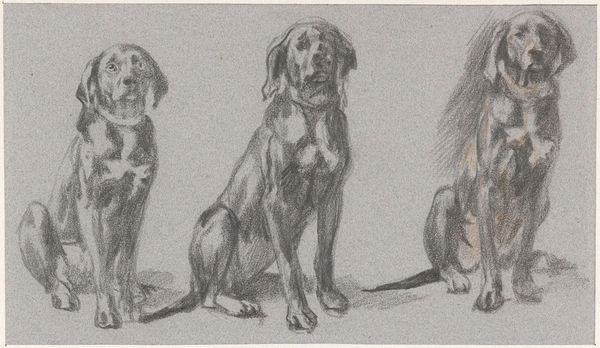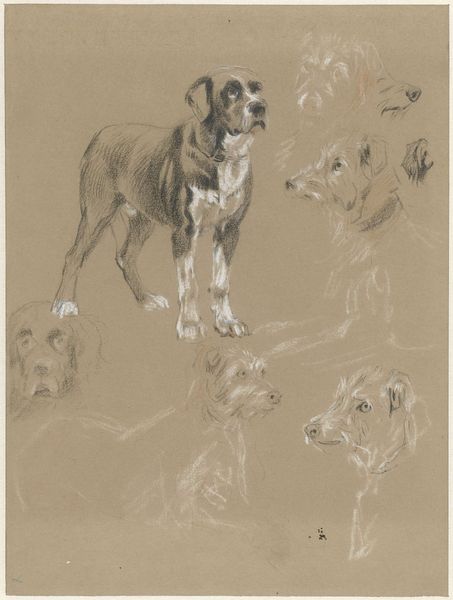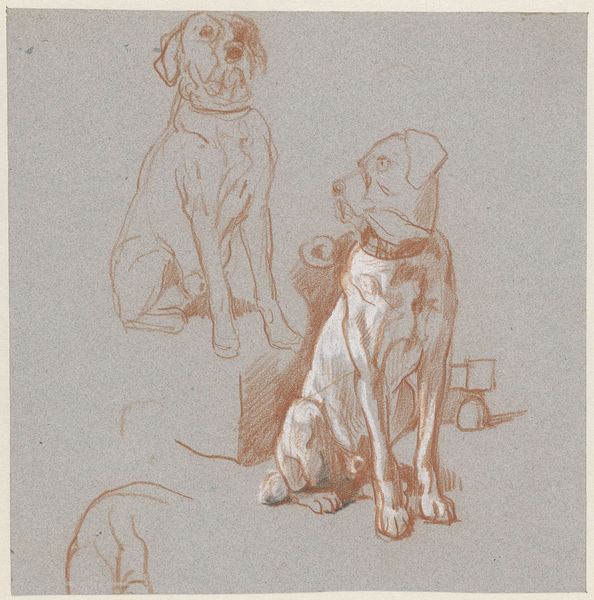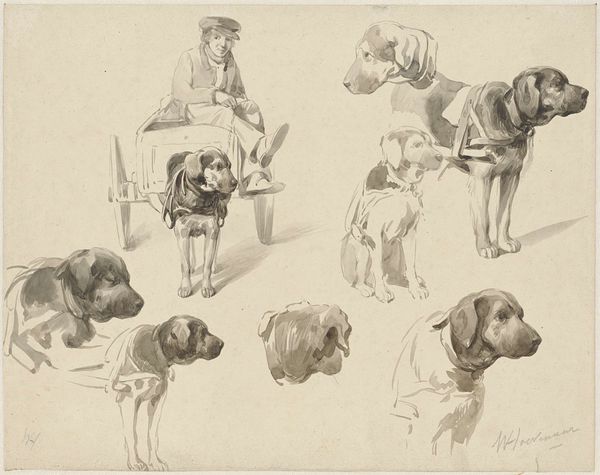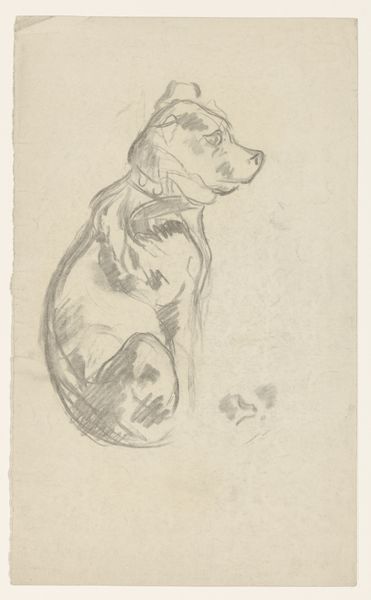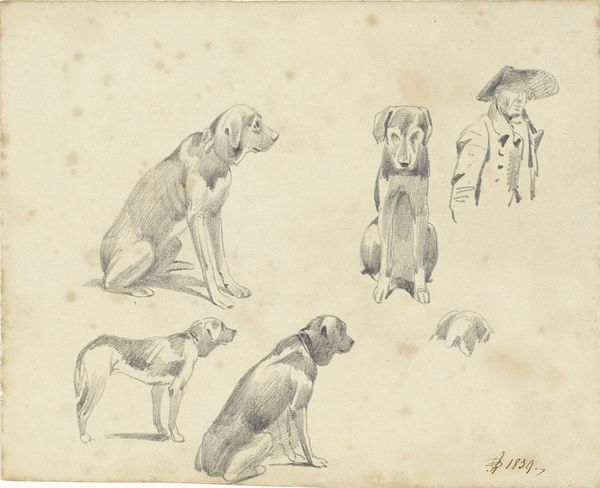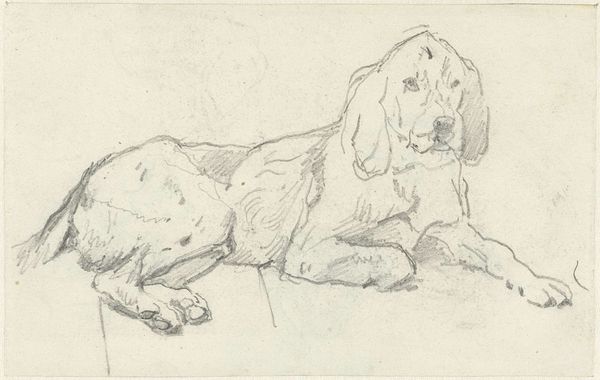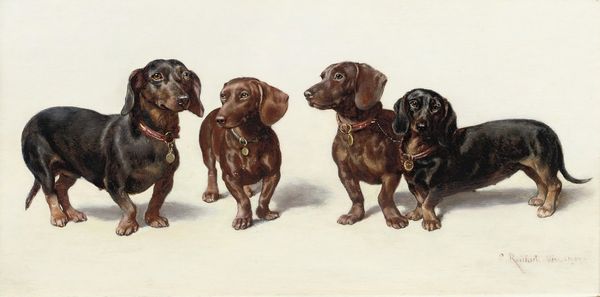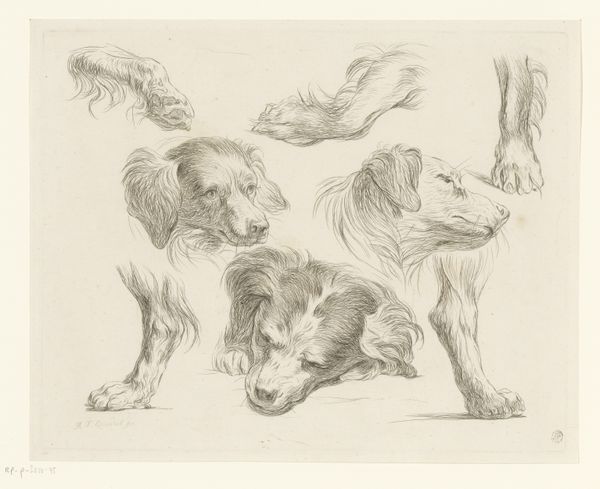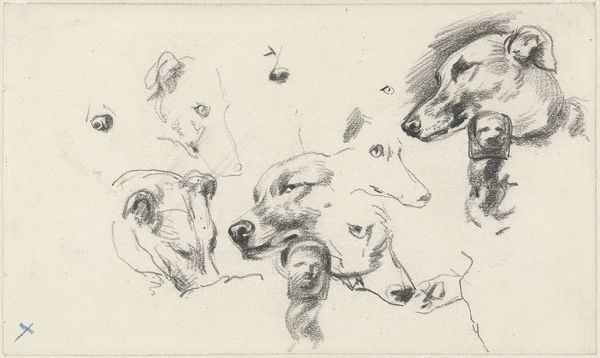
drawing, pencil
#
portrait
#
drawing
#
pencil
#
realism
Dimensions: height 255 mm, width 355 mm
Copyright: Rijks Museum: Open Domain
Editor: So, here we have "Three Studies of a Seated Dog" by Guillaume Anne van der Brugghen, created sometime between 1821 and 1891 using pencil. It’s deceptively simple, but I find the varying levels of detail across the three dogs quite compelling. What do you see in this piece that I might be missing? Curator: What strikes me is the artist's engagement with ideas of class and domesticity within 19th-century Dutch society. Consider the rise of the bourgeoisie and their increasing desire to emulate aristocratic lifestyles. These dogs, rendered in a simple yet elegant manner, become symbols of status and belonging. Editor: That’s interesting. So, the act of portraying a domestic animal like this isn't just about capturing its likeness but is loaded with social implications? Curator: Exactly! And beyond that, what about the breeds chosen for portraits? Who has access to such luxuries, and who is excluded? Art reflects societal power dynamics. And look at how Van der Brugghen uses pencil, a medium accessible to many, yet elevates it to create something quite refined. Isn't there something inherently democratic in this juxtaposition of medium and subject? Editor: I hadn't considered the choice of pencil that way – accessibility versus refinement. That creates a new layer for me, contrasting the apparent simplicity with those underlying tensions and questions. It makes you wonder, what statements are the other artists making about class dynamics at the time? Curator: Precisely! That tension is palpable. And it's what keeps art history perpetually relevant—the art pulls us in; the history opens the conversation; and contemporary theory suggests different points of analysis. Editor: Thank you. I am going to need to explore the political side of things more! Curator: A painting of a dog as political! Isn’t it wonderful how something that might at first appear quaint can become something far more intriguing?
Comments
No comments
Be the first to comment and join the conversation on the ultimate creative platform.
